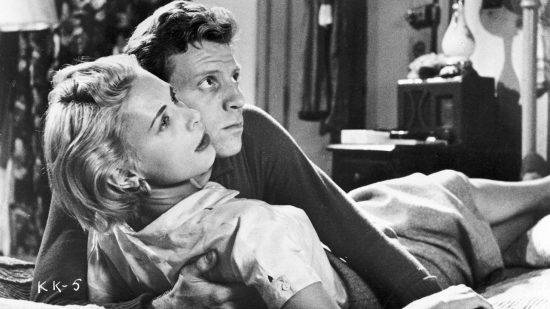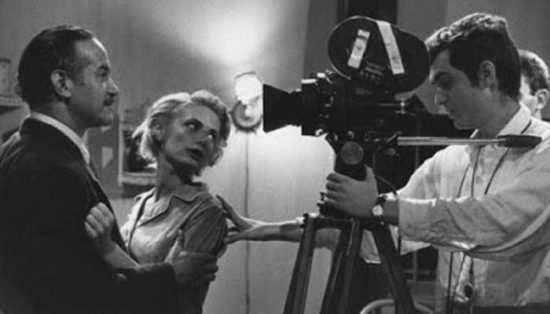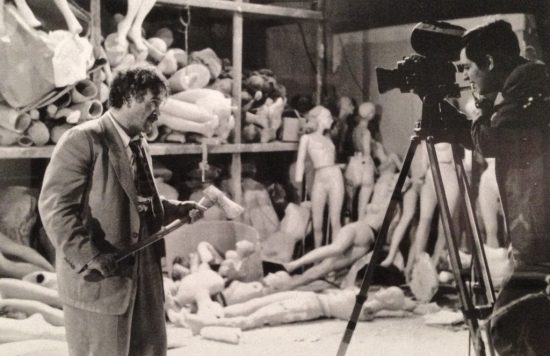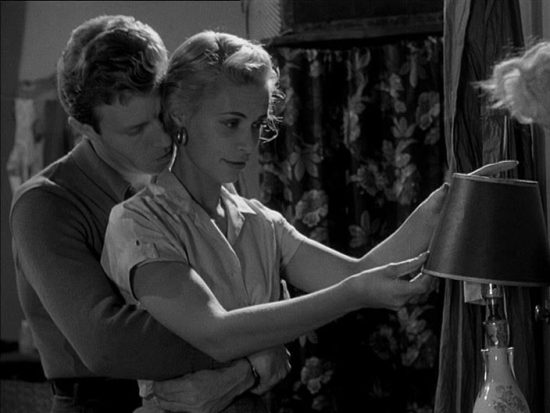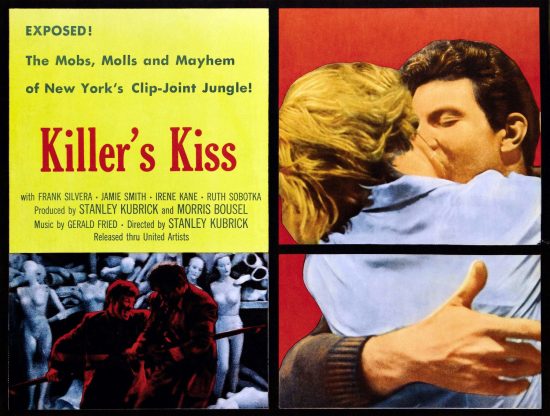Stanley KuBLOG: Killer’s Kiss – A Stanley Kubrick Retrospective
Davey Gordon (Jamie Smith) is a 29-year-old welterweight New York boxer at the fag end of his career. Across from his apartment, he watches his beautiful neighbor, taxi dancer Gloria Price (Irene Kane), but she is already the object of the obsessive interest of her violent employer Vincent Rapallo (Frank Silvera).
Killer’s Kiss feels much more like a debut film than Fear and Desire. It still has obvious limits of budget and scope, but in using New York as a backdrop, the ever-careful Kubrick gets far more bang for his buck. Once more raising money from private friends and family – mostly from a pharmacist – Kubrick has more confidence working in Film Noir, a genre which had produced low budget delights like Detour in 1945. It helped that the urban environment where Noir usually dwelt was home territory for the young photographer turned director. His short film Day of the Fight, filmed in 1951, had already allowed him to rehearse several of the scenes he would recycle. His experience as a documentary filmmaker and street photographer meant Kubrick had the eye to snatch a fascinating detail. The drunks on the streets of New York who end up playing a crucial role first emerge as background. Hot dog vendors, wind up toys, street life, tenement buildings, boxing gyms, dance halls, railway stations are all convincingly photographed and ground the fairly ho-hum fare of plot and wooden acting.
Although still relying on voice over, Kubrick’s confidence in his visual storytelling is notably higher. A quick scan of the photographs around Dave’s family snaps tells us more about the character than anything he tells in the narration. Likewise, the small roles of the thugs and Dave’s trainer attain more realism with their brief but strong sketches, like their drawn in charcoal and don’t feel it necessary to act as such. Likewise, mixed-race actor Frank Silvera – who also featured in Fear and Desire – is compelling as a villain coming apart at the seams. In contrast, Irene Kane and Jamie Smith are stilted, though the script hasn’t much to give them as far as characters are concerned. It also doesn’t help that the whole movie was dubbed – in Irene Kane’s case by another actress Peggy Lobbin – as in post because Kubrick was annoyed by the intrusiveness and expense of the sound equipment. The thinness of the story – essentially Davey is a boxer with a heart of gold who rescues the fallen damsel from the wicked gangster – is thickened up with some cinematically interesting set pieces. The chase across the rooftops is brilliantly done, along with the atmospheric boxing match, a dream sequence which flies down the New York streets with the film in negative and, the most stunning scene of all, the fight in the room of mannequins which combines the nightmarish and the surreal while still maintaining a sense of dusty and dangerous reality.
But with these few scenes and aware no doubt that this time he wanted to make something which was more evidently a feature film, Kubrick extends each sequence past its usefulness to swell the film’s running time, the pace suffers and the impact is lessened. This is also the case with an ending that is told to us rather than shown and was also compromised by the studio insisting on a happy resolution.
Ultimately, the film for Kubrick was a step in the right direction. He was playing to his strengths and was producing crisp, small films with flashes of brilliance for little money and far from studio interference though not free from it. But this was a self-conscious calling card film, a genre-exercise that didn’t have much to say or much feeling for its characters, with the exception of Gloria and her melodramatic story about her ballet dancer sister, played by Kubrick’s then-wife Ruth Sobotka. What interests Kubrick is the violence – there’s an amazingly brutal fight with a pair of thugs who destroy Davey with a brutal efficiency beyond the rest of the film – and New York. The impression is of a filmmaker in need of better material and collaborators. For his next film – The Killing – he would have both in James Harris – as a producing partner – Jim Thompson, a veteran crime novelist. Together they would make a film noir that could stand toe to toe with other late entries to the genre and would finally signal the arrival of a major talent.

